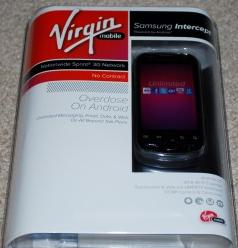In today's post I wrote about the Archos 7. The 7-inch version of the Archos Tablet has very few differences compared to the Archos 5 we reviewed before. See the review of the Archos 7 after the jump.
I suggest reading our Archos 5 Review first before you continue to read on this one to get a better perspective. Aside from the obvious increase in screen real-estate, the Archos 7 didn’t really add anything much on the Android tablet line for Archos. In fact, some of the nice features that the Archos 5 had were absent from the Archos 7. One of them is the ability to be hooked up to the Archos DVR Station so you can project the screen to a bigger display via HDMI.
The Archos 7 comes in a nice 7-inch LCD display but like the 5-inch model, the brightness is good but the contrast levels aren’t that great — it’s a bit washed out when set to full brightness which makes it almost unviewable in the outdoors or against bright light sources.
The display resolution is 800×480 pixels which is good for web browsing although you will have to use a stylus to navigate the resistive screen. As such, don’t expect any sort of multi-touch with this one.
Archos 7 Home Tablet
7″ TFT LCD @ 800×480 pixels
ARM Cortex A8 @ 600 MHz (main CPU)
32 bit DSP @ 430 MHz (additional processor)
128MB DDR RAM
8GB internal storage
up to 32GB via microSD
WiFi 802.11 b/g
USB 2.0
3.5mm audio jack
Android 1.5
The tablet is pre-installed with version 1.5 of the Android OS but there’s no Android Market in sight (the unit I got had an alternative app downloader though). There seems to be no hope in having the Android OS upgraded considering the amount of buint-in RAM on this unit (128MB only). The system feels a little slow already at its current state.
As usual, the kickstand at the back allows you to position the tablet for better viewing angle when playing videos or music. The unit has an 8GB built-in storage but that can be extended by adding a microSD on the provided slot.
Battery life is decent and can do a couple of full-length movies. The unit tends to heat up on prolonged usage though. When I learned that the suggested retail price of the Archos 7 is just Php11,500 despite the fact that it’s got a bigger form factor than the Archos 5 (with SRP of Php15,500), it got me a bit curious. So far, the Archos 7 is the cheapest Android-based tablet I’ve seen.
It’s got the basic features you’d expect from a tablet device (multimedia and connectivity) and the price point is something that could interest a lot of people looking to try a tablet PC for the first time. Don’t expect a lot from it though.
I suggest reading our Archos 5 Review first before you continue to read on this one to get a better perspective. Aside from the obvious increase in screen real-estate, the Archos 7 didn’t really add anything much on the Android tablet line for Archos. In fact, some of the nice features that the Archos 5 had were absent from the Archos 7. One of them is the ability to be hooked up to the Archos DVR Station so you can project the screen to a bigger display via HDMI.
The Archos 7 comes in a nice 7-inch LCD display but like the 5-inch model, the brightness is good but the contrast levels aren’t that great — it’s a bit washed out when set to full brightness which makes it almost unviewable in the outdoors or against bright light sources.
The display resolution is 800×480 pixels which is good for web browsing although you will have to use a stylus to navigate the resistive screen. As such, don’t expect any sort of multi-touch with this one.
Archos 7 Home Tablet
7″ TFT LCD @ 800×480 pixels
ARM Cortex A8 @ 600 MHz (main CPU)
32 bit DSP @ 430 MHz (additional processor)
128MB DDR RAM
8GB internal storage
up to 32GB via microSD
WiFi 802.11 b/g
USB 2.0
3.5mm audio jack
Android 1.5
The tablet is pre-installed with version 1.5 of the Android OS but there’s no Android Market in sight (the unit I got had an alternative app downloader though). There seems to be no hope in having the Android OS upgraded considering the amount of buint-in RAM on this unit (128MB only). The system feels a little slow already at its current state.
As usual, the kickstand at the back allows you to position the tablet for better viewing angle when playing videos or music. The unit has an 8GB built-in storage but that can be extended by adding a microSD on the provided slot.
Battery life is decent and can do a couple of full-length movies. The unit tends to heat up on prolonged usage though. When I learned that the suggested retail price of the Archos 7 is just Php11,500 despite the fact that it’s got a bigger form factor than the Archos 5 (with SRP of Php15,500), it got me a bit curious. So far, the Archos 7 is the cheapest Android-based tablet I’ve seen.
It’s got the basic features you’d expect from a tablet device (multimedia and connectivity) and the price point is something that could interest a lot of people looking to try a tablet PC for the first time. Don’t expect a lot from it though.
 RSS Feed
RSS Feed Twitter
Twitter















